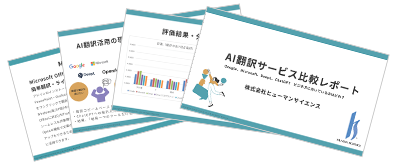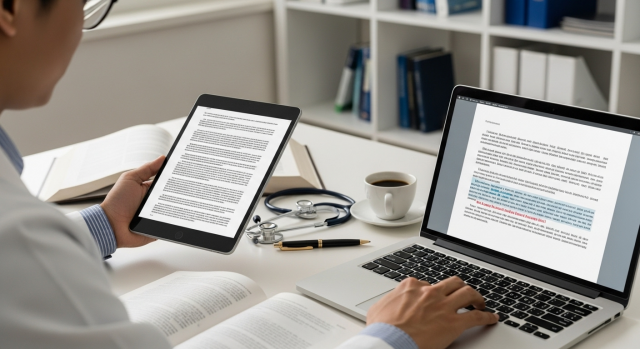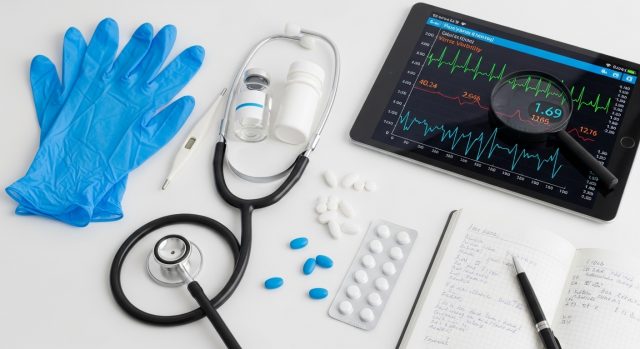How to streamline the translation of clinical trial summary reports?
The Human Science Blog Site features many articles on the use of translation tools like ChatGPT and has received a good reputation. We also publish a wide range of blogs on medical translation. Here, we will focus on introducing the "Clinical Study Report (CSR)."

- Table of Contents
-
- 1. What is a Clinical Trial Summary Report?
- 1-1. What is a clinical trial? What is the significance of advancing clinical trials quickly?
- 1-2. What is the role of the clinical study report in various clinical trial documents?
- 1-3. Structure of Clinical Trial Summary Report
- 2. Challenges Related to the Preparation of Clinical Trial Summary Reports
- 2-1. Requires effort to create
- 2-2. Translation must be done in large quantities and quickly.
- 3. Points to Consider When Translating Clinical Trial Summary Reports
- 3-1. Accuracy of terminology, compliance with regulatory requirements and guidelines related to clinical trials, consistency of terms, and clarity of expression are necessary.
- 3-2. Care must be taken when translating names of adverse events and drugs
- 4. How to streamline the translation of clinical trial summary reports?
- 4-1. Who should you ask to translate the clinical trial summary report?
- 4-2. Translation companies that provide efficiency improvements through machine translation and AI
- 5. For inquiries regarding the translation of clinical trial summary reports, please contact Human Science.
1. What is a Clinical Trial Summary Report?

1-1. What is a clinical trial? What is the significance of advancing clinical trials quickly?
Clinical trials refer to studies conducted on humans, particularly those aimed at obtaining approval for new drugs, evaluating their efficacy and safety.
Clinical trials are conducted by pharmaceutical companies as sponsors, with appointed physicians serving as principal investigators, following strict protocols at trial sites. The results are submitted to regulatory authorities in each country where the trial is conducted for review and approval.
Recently, the progress of clinical trials and approvals for obesity medications and dementia treatments has become a topic not only in medical news but also in economic news.
The smooth approval of these new drugs undoubtedly affects the medical community and patients, but it also impacts the performance and stock prices of pharmaceutical companies, making its influence on our social lives and the economy significant.
Additionally, there have been reports that the system requiring separate confirmation of safety for Japanese individuals during the clinical trial process of overseas pharmaceuticals will be fundamentally abolished (November 13, 2023). This can also be seen as a measure to promote the early introduction of new drugs.
The significance of advancing clinical trials swiftly is substantial.
1-2. What is the role of the clinical study report in various clinical trial documents?
In clinical trials, various types of documents are generated.
These include the clinical trial protocol, which contains detailed information about the planning and implementation of the trial; the Investigator's Brochure (IB), which provides documents related to the drugs or products used in the trial and serves to deepen the understanding of the investigational drug for the trial team and regulatory authorities; and the Informed Consent Form (ICF), which outlines the risks, benefits, and details of the protocol, and is provided to participants to ensure they understand and consent to participate in the trial.
A Clinical Study Report (CSR) is a document that summarizes the results of a clinical trial.
The Clinical Study Report is created at the end of the clinical trial. Similar to the clinical trial protocol, it includes the objectives and plans of the trial, statements related to GCP compliance, and evaluations of safety and efficacy.
The Clinical Study Report is submitted to regulatory authorities and is used to obtain approval for new drugs or treatments based on the results of the trial. Additionally, by being submitted to academic journals, the results of the clinical trial are widely shared with the medical community and researchers.
1-3. Structure of the Clinical Trial Summary Report
Regarding the guidelines on the structure and content of clinical trial summary reports (Notification from the Director of the Pharmaceutical Affairs Bureau, Ministry of Health and Welfare, No. 335, May 1, 1996, to the heads of health departments in each prefecture), the structure of the clinical trial summary report is described as follows, with detailed sub-items and guidelines for each item.
1. Title Page
2. Overview
3. Table of Contents
4. List of Abbreviations and Definitions
5. Ethics
6. Principal Investigator and Clinical Trial Management Organization
7. Introduction
8. Purpose of the Clinical Trial
9. Clinical Trial Design
10. Study Subjects
11. Evaluation of Efficacy
12. Evaluation of Safety
13. Discussion and General Conclusion
14. Tables, Figures, and Graphs Not Included in the Text but Cited
15. List of References
16. Appendix
In this way, it covers a very wide range of content that encompasses the entire clinical trial.

2. Challenges Related to the Preparation of Clinical Trial Summary Reports

We will explain common issues related to clinical trial summary reports.
2-1. Requires effort to create
The clinical trial summary report is a vast document that can exceed 100 pages in the main text alone, and can extend to several hundred pages when including citations, appendices, data, and graphs.
It is necessary to create the clinical trial summary report by incorporating a significant amount of information from source documents such as the clinical trial protocol, statistical analysis plan (SAP), case report form (CRF), and serious adverse event (SAE) reports.
Since the clinical trial summary report is a document created in the final stage of the clinical trial, advanced knowledge of medicine, statistics, and various regulations is required for its preparation. Whether pharmaceutical companies secure resources internally or request cooperation from external writers, it is essential to create a vast and sophisticated document while adhering to the specified format.
2-2. Must translate in large quantities and quickly
As mentioned earlier, the volume of clinical trial summary reports is vast and the content is highly sophisticated, yet it is required to be prepared swiftly.
When applying overseas using clinical trial results from Japan, an English report is required, and when applying in Japan using an overseas English report, it is necessary to create a Japanese summary, thus speed is also required in translation.
3. Points to Consider When Translating Clinical Study Reports
Next, I will share some important points to consider when translating clinical trial summary reports.
3-1. Accuracy of terminology, compliance with regulatory requirements and guidelines related to clinical trials, consistency of terms, and clarity of expression are necessary.
Accuracy of Terminology: It is important to translate medical and pharmaceutical terms related to clinical trials accurately. Especially since there are many specialized terms such as drug names, adverse event names, treatment methods, and diagnostic criteria, translations should refer to appropriate databases and materials to avoid misunderstandings.
Compliance with Regulatory Requirements and Guidelines for Clinical Trials: Since the clinical trial summary report is submitted to regulatory authorities (such as the FDA, EMA, and Japan's PMDA), it is necessary to align with the regulatory requirements of each country and international guidelines related to clinical trials (such as ICH-GCP). There may be differences in the format and content required for reports by country, so translations that correspond to these requirements are needed.
Consistency of Terminology: It is important that the terms and phrases used in the report are consistent. In particular, key terms related to clinical trials (such as patient, subject, treatment group, control group, etc.) and major specialized terms for the drug under investigation must be unified throughout the translation.
Clarity of Expression: Explanations regarding clinical trial results and testing methods need to be translated clearly and concisely to avoid misunderstandings. Especially in sections related to data and statistical analysis, it is essential to convey accurate numbers and results appropriately.
3-2. Care must be taken with the translation of adverse event names and drugs.
As a specific example of the above points, I will explain using "adverse event name" and "drug name".
The "adverse event name" that occurs after drug administration must be described using names that conform to the international medical terminology system MedDRA (Medical Dictionary for Regulatory Activities).
Additionally, there are "chemical name", "generic name", and "brand name" for drugs. Taking aspirin as an example, the "chemical name (representing the chemical structure)" is "2-acetoxybenzoic acid", and both the "generic name (representing the active ingredient)" and the "brand name" are "aspirin" (by the way, there are over-the-counter medications containing aspirin, such as Bufferin).
Basically, as long as you refer to appropriate databases and materials and translate according to the original text, there should be no problem, but it is necessary to understand the positioning of MedDRA and the differences in drug names to translate correctly.
4. How to streamline the translation of clinical trial summary reports?

4-1. Who should you ask to translate the clinical trial summary report?
For requests for translation of clinical trial summary reports, it is advisable to choose a translation company with a proven track record in medical, pharmaceutical, and clinical trial translations, as well as translators with high levels of expertise and experience.
4-2. Translation companies that provide efficiency improvements through machine translation and AI
The translation of clinical trial summary reports emphasizes not only expertise but also speed and cost.
There are translation companies that excel in improving translation efficiency through "machine translation" and using existing translations as translation memories to leverage past documents, as well as through AI and checking tools like ChatGPT to streamline surrounding translation tasks.
It is advisable to request the translation of clinical trial summary reports from a translation company with such strengths.

5. For inquiries about the translation of clinical trial summary reports, contact Human Science

Human Science is a translation company specializing in medical and healthcare translations, and at the same time, it is a document technology company that develops and operates various translation-related technologies. Its capabilities are backed by a wealth of experience with a wide range of major IT companies and manufacturers.
Features of Medical Translation | Human Science
We have a track record of clinical trial documents, including the clinical trial summary report introduced this time, clinical trial protocols, CIOMS, and informed consent forms.
Medical Pharmaceutical and Medical Translation Services | Human Science
Please leave the improvement of translation efficiency and quality using machine translation and translation support tools to Human Science.
Extensive Achievements in Medical Translation | Human Science




























